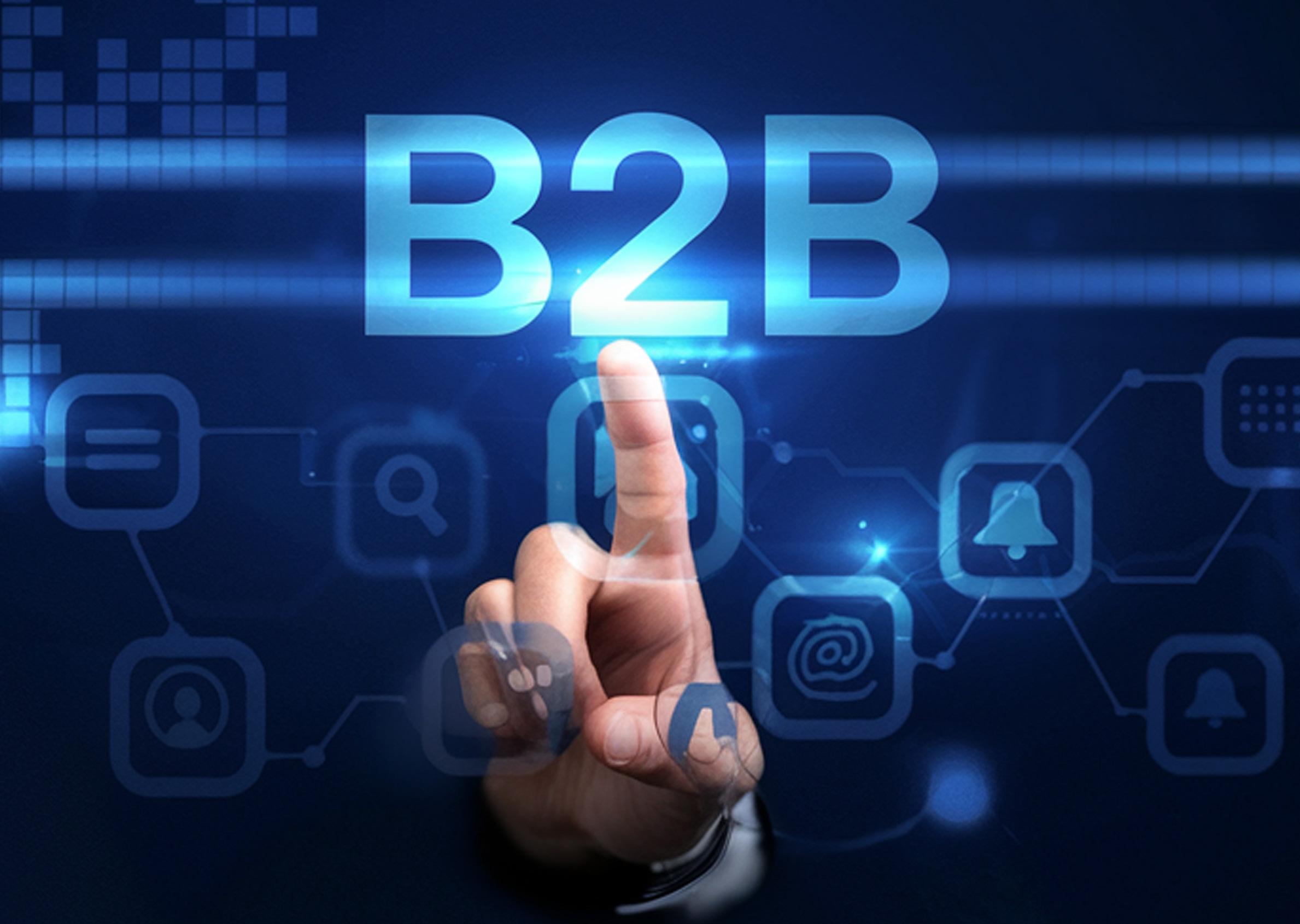






Managing Director
Shankar Shivaprasad
Co-founder & CEO
Shashank M
Chief Editor
Ujal Nair
Assistant Editor
Kevin Thomas
Laura Edwards
Head of Operation
James
Head of Production
Tom Hanks
Head of Research
Catherine D’Souza
Head of Media Sales
John Smith
Advertising Contact Info@wboutlook.com
Content Managers
Sathya Narayana B
Amith Raj S
Business Developers
Daisy Cooper, Mark Cooper, Justin Wong, Elena Davis, Eric Thomson
Graphic Designer
Chandan R
Video Editor
C Gidieon Sam Issac
Accounts Manager
Steve Smith
Office Address
32 Pekin St #05-01
Singapore 048762
Phone: +65 86159608

As we delve into the evolving landscape of 2025, it becomes increasingly apparent that the powerful convergence of cutting-edge technology, sustainability initiatives, and transformative leadership is fundamentally reshaping the way businesses operate across the globe. This issue takes a closer look at the pivotal trends that are not simply influencing, but actively redefining what it means to achieve success in today’s vibrant and ever-changing economic environment.
In the Asia Pacific region, a robust economic resurgence is characterized by an impressive GDP growth rate. This remarkable growth is igniting a wave of optimism and renewed confidence among investors. Pioneering nations such as Japan, China, and Australia are at the forefront of this economic upturn, driving a wealth of investment opportunities, particularly in sectors overflowing with potential for innovation, most notably in hospitality and real estate.
Simultaneously, the meteoric rise of artificial intelligence across various industries is compelling companies to embark on bold journeys of digital transformation. This evolution is laying the crucial groundwork for a more agile, responsive, and interconnected business ecosystem. As organizations harness the power of AI, the landscape is shifting towards unprecedented efficiency and adaptability.
Moreover, our unwavering commitment to sustainability is experiencing a dramatic shift. Companies are striving to minimize their carbon footprints with fervor, leading to a collective focus on green construction and responsible waste management. The increasing adoption of LEED-certified buildings serves as a testament to this dedication, vividly illustrating how sustainable investments not only enhance asset value but also align with evolving compliance standards. Organizations are increasingly recognizing that proactive strategies surrounding Environmental, Social, and Governance (ESG) principles do more than meet regulatory expectations—they resonate deeply with a burgeoning base of environmentally conscious consumers who prioritize ethical practices.
At the core of this transformative journey, we highlight the essential qualities of future leaders. Traits such as emotional intelligence, resilience, and a commitment to continuous learning are emerging as indispensable assets for navigating the complexities and uncertainties of the modern business world.
As we forge ahead, let us collectively embrace the myriad of opportunities and challenges that lie before us. Together, we can cultivate innovative practices that not only drive financial prosperity but also contribute to a more sustainable and equitable global community. We hope the insights within these pages inspire you, and we eagerly anticipate witnessing how these ideas will shape the future of our business landscape. Happy reading!
Be sure to check out our website at www.worldbusinessoutlook.com



Connect with us on Facebook: www.facebook.com/WBOutook
Twitter : https://twitter.com/wboutlook
Instagram: https://instagram.com/wboutlook
LinkedIn: https://www.linkedin.com/company/world-business-outlook
YouTube: https://www.youtube.com/@worldbusinessoutlook908




24


The Top 5 Leadership Qualities Future Leaders Will Need by 2025
SAP Predictions 2025: What’s Next in Digital Transformation? 34 40


El Salvador crypto license: how to obtain and what you need to know Global Trends in Social Media Marketing: How Instagram Leads the Way

As we enter the year 2025, the world of leadership is undergoing a significant transformation. Leaders need to be flexible and visionary to navigate the challenges posed by AI integration and changing workplace dynamics. Leadership in this AI-driven age requires a commitment to innovation, an emphasis on teamwork, and the acquisition of future-proof competencies. A key aspect of this new landscape is understanding and leveraging AI tools effectively while maintaining a balance with human creativity. For example, evaluating the accuracy of AI systems becomes essential for informed decision-making. Tools like ZeroGPT are increasingly used for text verification, and exploring whether is ZeroGPT accurate can provide insights into the reliability of such AI technologies. By mastering these tools and blending them with creative thinking, leaders can stay ahead in this rapidly evolving era.
Technological Adaptation and AI Proficiency
Leaders in today’s highly competitive industry need to be able to foresee shifts in the market and spearhead

technical advancements. Nearly two-thirds of worldwide company executives are enthusiastic about the potential effects of AI on their jobs. Leaders that have a favorable outlook on technology will make sure to employ new systems and tools to stay ahead of the competition. In order to drive efficiency and make informed decisions, it is vital for leaders to understand and use AI.
To back this up, businesses should incorporate AI and other new tech by providing executives with opportunities to learn about practical AI applications and how to implement them to boost productivity. This kind of hands-on experience will help executives understand AI better and be more open to experimenting with its potential. In addition, fostering AI initiatives across many company areas may help develop a comprehensive knowledge. In this method, executives may broaden their understanding of AI’s potential uses, which in turn encourages a more creative and integrated strategy and leads to wider acceptance of the technology.

The capacity to learn and adapt on the go is a hallmark of leadership programs that actively participate in digital transformation. Results show that enthusiasm for AI differs across countries; for example, 81% of Indian business executives, 66% of American business leaders, and 47% of British business leaders are optimistic about the ways AI may improve their jobs. By cultivating a culture that values continuous learning and skill improvement, companies may equip their employees to confront future obstacles directly. To ensure that leaders are upto-date on the newest advances in artificial intelligence, it would be beneficial to implement webinars and online courses on a regular basis. This will enable leaders to stay at the forefront and integrate new technologies into their strategic planning more efficiently.
Before anything else, emotional intelligence should be a top priority for any senior leader or management looking to excel in the year 2025. Strong employee engagement, high levels of work satisfaction, and positive organizational cultures are all associated with emotional intelligence in leaders. The same study also found that leaders with high emotional intelligence exhibited characteristics and abilities like self-awareness, self-management, strong interpersonal skills, and the ability to effectively manage relationships.
In particular, being self-aware and having excellent communication and leadership skills are two of the most important components of emotional intelligence, without which it is nearly impossible to claim to have a high degree of EQ.
Another essential feature every future leader must have is excellent, superior time management skills!
What is success? It’s the ability to stay effective in a business world that is always evolving—so, executives must constantly learn new things. One of the most important success factors in retaining employees, according to the Global Workforce 2024 Survey, is the opportunity for ongoing education and training.
Organizations can help cultivate this trait by highlighting the importance of learning and fostering an environment that rewards and acknowledges progress. Both leaders and staff benefit from this method since it allows them to adjust to changing circumstances.
A leader’s dedication to his or her own professional and personal growth is an inspiration to those under their leadership. Constant education is crucial for workers of all ages, according to the Global Workforce 2024 Survey. Organizations can foster a culture of learning by encouraging creativity and inquiry through frequent opportunities to share what they’ve learned. Each leader reaps the benefits, and the team as a whole benefits from a culture that is more knowledgeable and creative.

Making more educated decisions is the foundation of confident leadership. The research highlights the importance of ongoing education, since many respondents from different countries prioritize learning opportunities. Making learning a part of regular operations and performance assessments is a beneficial way for firms to incorporate this into their organizational fabric. Seeing learning as an ongoing process, rather than an occasional activity, empowers leaders to flourish in their professions. Constant learning requires self discipline and complete understanding of the importance of personal growth, so it is better to start developing such healthy habits well in advance.



Although flexibility and resilience are often considered essential leadership qualities from an organizational perspective, we prefer focusing on the importance of resilience from the perspective of a leader’s personal professional development. That being said, it’s smart to be flexible and think about alternative ways you may put your abilities to use, including consulting, freelancing, or applying for a middle management position in a different area. Having a backup plan is always a beneficial idea, according to the goal setting theory.
So, add reliance training to your everyday routine and Monday motivation list if you ever dream about becoming a genuinely successful leader in the future.
Leaders must build trust and be real if they want to promote employee wellbeing successfully. Bold and resilient leaders create a supportive atmosphere where wellbeing is valued, enhancing overall productivity and engagement. Physically fit workers are more invested in their work and provide better results. The importance of employees’ well-being in today’s stressful work environment is greater than ever before. Enhancing employee happiness, driving productivity, and ensuring long-term success are all outcomes of an inclusive and supportive workplace. To make sure staff are taken care of in every way, it’s a good idea to implement wellness programs that cover all three dimensions of health—and excellent future leaders should always think toward such an approach.

Supply chain management (SCM) is no longer confined to logistics—it’s the backbone of any successful business. When done right, SCM streamlines operations, cuts down costs, and keeps customers happy. It’s not just about moving goods; it’s about creating a strategic advantage that drives long-term success.
For businesses looking to stay competitive, investing in SCM is a no-brainer. It’s a way to respond to market demands, adapt to challenges, and stand out in a crowded field. Whether improving efficiency, enhancing customer satisfaction, or staying resilient during disruptions, SCM has become a core business strategy.
Operational efficiency is what keeps a business running smoothly, and supply chain management is at the heart of it. Streamlining processes like inventory management, supplier coordination, and product distribution helps businesses cut costs and save time. An efficient supply chain isn’t just faster—it’s smarter, adapting to challenges and reducing waste along the way.
Technology has revolutionized operational efficiency in SCM. Tools like automated systems and predictive analytics help businesses anticipate demand, prevent stockouts, and minimize overproduction. These improvements don’t just reduce costs—they also enhance a company’s ability to respond to market changes quickly. For businesses, an efficient supply chain isn’t just a goal; it’s a competitive edge.
A strong supply chain starts with a well-trained team. Encouraging your employees to advance their
knowledge through programs like an MBA in supply chain management online is a smart move. This type of program equips professionals with the tools to think strategically, solve complex problems, and lead in a dynamic environment. The online format is especially beneficial for working professionals, allowing them to upskill while staying active in their roles.
The benefits extend far beyond the individual. Employees who pursue advanced SCM education bring fresh ideas and strategies back to the workplace. They’re better equipped to identify bottlenecks, implement solutions, and leverage data to make informed decisions. For businesses, this investment in education translates to a more efficient, innovative, and forward-thinking supply chain.
Customer satisfaction is directly tied to how well your supply chain operates. If products are consistently in stock and delivered on time, customers notice. A well-managed supply chain promises a seamless experience, building trust and loyalty. In today’s market, where customer expectations are sky-high, SCM can be the difference between keeping or losing a client.
Businesses that excel in SCM go beyond just meeting expectations—they create exceptional experiences. Faster delivery times, accurate order fulfillment, and transparent tracking give customers confidence in a brand. These elements build long-term relationships, showing that SCM isn’t just an internal process—it’s a customer-focused strategy that drives business growth.

Disruptions are a reality in today’s interconnected world, from natural disasters to supply shortages or geopolitical issues. A well-designed supply chain isn’t just efficient—it’s resilient. Resilience means having the flexibility to adapt when things don’t go as planned, ensuring that business operations keep moving forward even during a crisis.
Strategies like diversifying suppliers, building buffer inventories, and using real-time tracking systems are critical for managing disruptions. For example, a business with multiple suppliers for a key product can quickly pivot if one supplier experiences delays. Investing in a resilient supply chain doesn’t just prepare businesses for the unexpected—it gives them a competitive edge in navigating uncertainty.
Data is the lifeblood of modern supply chain management. Tools like predictive analytics, real-time tracking, and demand forecasting allow businesses to make informed decisions that optimize performance. With these tools, companies can identify trends, anticipate customer needs, and reduce inefficiencies in their operations.
For instance, a retailer using demand forecasting might adjust inventory levels ahead of a seasonal rush, avoiding stockouts or overstocking. Similarly, real-time tracking systems help monitor shipments

and address delays before they impact the customer. Technology doesn’t just improve visibility—it turns data into actionable insights, helping businesses stay agile and competitive.
Sustainability in today’s time is becoming imperative for business. Customers and stakeholders increasingly expect companies to adopt environmentally responsible practices. Supply chain management plays a significant role in this effort, from sourcing materials ethically to minimizing carbon footprints through efficient transportation.
Businesses that prioritize sustainability in their supply chains, at times, see long-term benefits. Reduced waste, lower energy consumption, and improved brand reputation are just a few examples. A company that invests in green supply chain practices isn’t just helping the planet—it’s appealing to a growing market of socially conscious consumers. Supply chain management is far more than a background operation—it’s a strategic powerhouse that drives efficiency, customer satisfaction, and resilience. By leveraging education, technology, and sustainable practices, businesses can transform their supply chains into a competitive advantage. In today’s fast-paced world, a strong supply chain isn’t just nice to have—it’s essential. Investing in SCM is an investment in longterm success, enabling businesses to adapt, grow, and thrive in any environment.




Technology has transformed the way we communicate in this dynamic world. From instant messaging to virtual meetings, tech innovations have revolutionized how we stay connected in both professional and personal contexts.
With global spending on technology projected to reach a staggering USD 5.74 trillion in 2025, it’s clear that communication tools will continue to evolve and expand. But what makes communication easier than ever before? Let’s look into how technology enhances the way we connect.
Over the last two decades, technology has completely changed communication. From the shift from traditional face-to-face or written communication to digital platforms, the world is now a lot more connected than it ever was. Whether messaging a colleague, scheduling a virtual meeting, or collaborating with a team halfway across the globe, technology makes it easier to stay in touch anytime, anywhere.
Instant messaging, video calls, and collaborative platforms ensure that communication happens almost instantly. Gone are the days of having to wait weeks for a letter to arrive or schedule a meeting that may happen a few weeks in advance. All these things, through digital tools, can make communication instant and flexible.
Smartphones, social media, and cloud tools like Google Drive and Dropbox have revolutionized communication by overcoming barriers like time zones and distance. In Italy, improved connectivity and tech adoption allow individuals and businesses to stay connected through e-sim in italia, enabling mobile experiences while abroad. This enhances collaboration and productivity across borders, making global communication seamless and efficient, and fostering stronger international relationships and business growth.
The greatest benefit of tech communication tools is speed. Instant messaging, emails, and tools like Slack or Microsoft Teams ensure that workflows run faster, avoiding the delay of older methods. Quick updates, responses, and file sharing keep projects moving.
As remote work becomes the norm, digital communication tools like Zoom, Microsoft Teams, and Slack enable teams to collaborate across time zones, breaking geographic barriers and connecting businesses with global talent.
Video conferencing and messaging features on Zoom and Microsoft Teams keep teams in touch with one another and allow collaboration without travel.
Cloud-based tools such as Google Workspace and Asana allow teams to collaborate efficiently by allowing them to work on shared documents, track projects, and communicate asynchronously, thereby helping improve productivity from any location.
Real-time communication tools, such as video calls and messaging, allow for quick problem-solving, while asynchronous tools like emails and forums ensure discussions remain accessible at any time.
Technology has not only made professional communication easier but also enhanced personal connections. Instant messaging apps and video calls are increasingly becoming the preferred ways for people to stay connected.
Connect to others through a click of the button on your messaging apps: WhatsApp, Telegram, or Facebook Messenger. Quick updates with friends, and urgent work reports: Instant messaging facilitates fast, informal communication, at any time of the day and in any location.

Video calls bridge the gap between in-person and digital interactions. Zoom, Google Meet, and Microsoft Teams share face-to-face conversations across distances as large as possible. These tools not only make meetings more personal but also foster better collaboration among remote team members.
For personal relationships, technology has made it easier to stay in touch. Video calls, social media, and instant messaging apps have helped people maintain deeper connections, regardless of distance. Whether it’s a family chat or catching up with friends, technology ensures that people can feel connected even when physically apart.
While technology offers numerous advantages, it also brings challenges such as communication overload.

However, evolving solutions continue to address these challenges effectively.
With multiple platforms to manage, communication overload is a real concern. Integrated tools like Slack and Microsoft Teams help reduce clutter by combining messaging, file sharing, and task management in one place.
Technology has greatly improved communication for individuals with disabilities. Tools like speech-to-text, screen readers, and closed captioning enable easier participation in conversations, fostering inclusivity.
Blurring work and personal boundaries can lead to burnout. Thoughtful use of features like “Do Not Disturb” or scheduling tools helps maintain a healthy communication balance.


In the frenzy of digital life, local SEO emerges as a breakthrough opportunity for startups to take their first bold steps. Local search optimization allows startups to cut through the noise and directly connect with customers in their area who need what they’re selling. This crystal-clear focus sparks a chain reaction: greater brand visibility, more footsteps, and a customer base that will back your business every step of the way.
Startups need to plant their flag locally if they want to build a loyal customer base and thrive in the long run. For any fledgling business or eclectic eatery, boosting neighborhood appeal is the catalyst that can propel it from unknown to must-visit status. Statistics indicate that 46% of Google searches are for local information, meaning startups that invest in local SEO stand a higher chance of being discovered by their target audience.
1. Optimize Your Google Business Profile (GBP)
Your Google Business Profile plays a crucial role in how customers find and perceive your startup. To improve your chances of appearing in local searches:
• Ensure all fields, such as your address, contact details, and business hours, are complete.
• Make your message pop with photos that proudly display your offerings and distinctive characteristics.
• Consistently engage with reviews by responding promptly and professionally.
Your Name, Address, and Phone Number (NAP) must be uniform across all platforms. Mixed signals can send your search engine rankings into a tailspin and leave potential customers scratching their heads. Use tools like Moz Local or BrightLocal to monitor and manage your listings efficiently.
Locally relevant content helps improve search rankings and audience engagement. Write blog posts about local happenings, nearby events, or industry updates specific to your area. Incorporating relevant local keywords can further enhance your site’s visibility.
Positive reviews greatly influence purchasing decisions


and boost your local search rankings. Make it easy for customers to leave reviews by providing direct links. Encourage feedback after positive interactions to steadily build your online reputation.
Since more than 60% of local searches are performed on mobile devices, having a mobile-friendly website is critical. Your site should load quickly, display well on different screen sizes, and provide a smooth navigation experience.
After implementing local SEO strategies, it’s essential to track their performance. An array of instruments and platforms is at your disposal. Google offers incredible tools to supercharge your online performance. Step into the Search Console, and Google hands you the keys to unlocking your website’s search potential – everything from crawl errors to analytics is at your fingertips.
Metrics to monitor include:
• Organic traffic: The number of visitors arriving through local search queries.
• Click-through rate (CTR): How often users click on your business in search results.
• Conversions: The percentage of visitors who take desired actions, such as contacting you or making a purchase.
What do these metrics tell you? They reveal what’s working – and what’s not – so you can tweak your strategy for maximum impact.
Local SEO is a cost-effective way for startups to build awareness, attract nearby customers, and drive longterm success. Begin by optimizing your Google Business Profile, keeping your NAP details consistent, and requesting reviews from happy customers. The beauty of progress lies in its subtlety – gentle pushes can send ripple effects far and wide. What if you could strengthen your bond with the people right around the corner? The earlier you start implementing local SEO strategies, the sooner you’ll notice positive changes in your visibility and customer engagement. Focus on amplifying your local voice, and you’ll discover a startup that’s primed for success. Persistent efforts will take you further than you ever thought possible.

What do sneakers, hoodies, and skateboards have in common? They’ve helped create a billion-dollar empire. Streetwear, once a small subculture, is now a global fashion powerhouse. It’s not just about clothes anymore; it’s about attitude, identity, and exclusivity. And here’s the thing: it’s only getting bigger.
But why has this style captured the hearts of so many? Maybe it’s the excitement of grabbing a limited-edition drop or the comfort of wearing something perfect for any occasion. Well, the appeal is clear. But the trends driving this movement are what make it truly exciting.
Ready to see how casualwear changed the game? Let’s dive in.
The Origins and Evolution of Streetwear
Casualwear didn’t just appear overnight. It began in the 1980s, rooted in skateboarding, hip-hop, and urban art. These subcultures gave birth to a style that was raw, edgy, and unapologetically bold. For many, it was an identity beyond just clothing. Over time, it broke out of its niche and caught the attention of mainstream fashion.
Think about brands collaborating with hip-hop artists or sneakers selling out in minutes. These moments weren’t just trends; they were shifts in culture. Casualwear became a symbol of authenticity, and that’s what drew people in. Today, it’s everywhere, blending casual comfort with luxury design.
One of the biggest reasons casualwear stands out is exclusivity. Limited drops create excitement and urgency, making people feel like they’re part of something special. Who wouldn’t want to own a piece of apparel that only a handful of others have?

Take a well-crafted zip up hoodie, for example. It is not just any covering but one crafted with quality materials, versatile designs, and attention to detail. Pieces like this perfectly blend comfort and edge. This quality makes them a must-have for those who value practicality and style. The best part? Reliable brands understand how to elevate everyday wear into iconic staples. This is why loyal fans keep coming back for more.
2. Celebrity and Influencer Power
Streetwear owes much of its success to influencers and celebrities. When a famous musician or athlete rocks a particular brand, it instantly becomes a must-have.
This connection between fashion and fame has helped casualwear become aspirational. Fans don’t just want to wear the clothes. They want to embody the attitude and confidence that comes with them.
3. Online Communities and E-Commerce
The internet has taken casualwear global. Social media platforms like Instagram and TikTok have made it

easier for brands to showcase their styles and for fans to connect. Online drops and collaborations have also made it possible for anyone, anywhere, to join the movement.
This shift to digital has opened up the market, making casualwear accessible to a wider audience. So, beyond local stores or pop-up shops, it has built a global community.
1. Sustainability and Eco-Friendly Materials
Causalwear is stepping up to protect the planet. Many brands now use sustainable fabrics and ethical production methods. You might notice pieces made from recycled materials or organic cotton. These choices look great and feel good to wear, knowing they’re helping the environment.
What’s more? Some companies are adopting a “slow fashion” approach. This means focusing on quality over quantity so your favorite items last longer. When







buying, watch for brands sharing details about their eco-friendly practices.
2. Tech-Integrated Apparel
Streetwear is getting smarter with high-tech features like jackets with built-in heating and sneakers that sync with your phone. Some brands are even using augmented reality to create designs that change when viewed through an app. It’s a mix of style and innovation that makes your outfits stand out.
3. Genderless Streetwear
Streetwear is breaking barriers with genderless designs that focus on comfort and inclusivity. Oversized fits, neutral colors, and versatile styles are becoming the go-to for self-expression. And, who doesn’t love the coziness of an oversized hoodie?

The love for casualwear continues even after you’re done with it. Resale platforms let you trade or sell preloved items, making it easy to find rare pieces and give clothes a second life.
This trend isn’t just about saving money—it’s also about sustainability. By purchasing second-hand, you’re reducing waste and making a positive impact. So, next time you’re looking for something unique, check out resale sites.
Conclusion
This journey from skateparks to luxury runways shows streetwear’s cultural power. It’s more than clothes; it’s about individuality and connection. As casualwear evolves, these trends hint at fashion’s future.

Technology continues to shape and be shaped by trends in commercial real estate, influencing both business operations and consumer behaviors. In recent years, customer expectations around technology have surged, with a growing preference for digital interactions rather than traditional methods. Businesses have been compelled to adapt and align with this shift in demand. Today, we’ll explore the most significant trends currently impacting the commercial real estate industry.
Eco-friendly investing plays a key role in the green movement within commercial real estate, with a primary focus on minimizing the environmental impact of buildings while protecting the planet.
The aim is to create carbon-neutral facilities designed to prevent carbon emissions altogether. Commercial real

estate developers committed to eco-friendly investing often prioritize the following actions:
• Utilizing sustainable building materials
• Incorporating alternative energy sources where feasible
• Applying passive design principles to provide costefficient cooling and heating solutions
An added advantage of adopting eco-friendly practices is eligibility for various local and federal tax incentives. These make these investments not only environmentally responsible but also financially rewarding, especially in the years ahead. Get the best commercial real estate for lease at Investa and be a part of a sustainable future.
Contrary to sensational headlines, the physical office is far from obsolete, it’s evolving instead. While the office

market faces its highest vacancy rates in decades, investors can anticipate a more stable outlook for occupancy and rent growth this year.
Hybrid work models and shifting employee expectations are prompting employers to move away from dense, gateway markets toward larger, more cost-efficient locations. Furthermore, the “flight to quality,” which began before the pandemic, is expected to gain momentum as businesses respond to the demand for flexible workspaces with appealing amenities.
Partnerships between government agencies and private organizations are essential for driving development, particularly in the area of affordable housing. Governments may provide land that can be leased to apartment developers at reduced rates.
Similarly, local authorities often support private affordable housing projects through tax incentives, grants, or low-interest financing. Public agencies can also streamline development by simplifying permit approvals and cutting through regulatory delays.
For commercial real estate developers, maintaining regular communication with public agencies ensures they stay informed about zoning updates and regulatory changes, while addressing any project challenges efficiently.
Sustainability is no longer a choice. It’s an essential part of modern living. The push for green buildings and eco-conscious designs continues to gain momentum, fueled by environmental needs and the cost-saving advantages they provide.
LEED-certified buildings are on the rise, alongside efforts to reduce carbon footprints. For investors, focusing on sustainable properties not only supports environmental responsibility but also protects long-term asset value and ensures durability over time.
Environmental, Social, and Governance factors have become a key priority in real estate strategies. Today, organizations aren’t just interested in energy-efficient buildings, they’re searching for spaces that support their broader sustainability objectives while meeting increasingly strict regulatory standards.


Modern lease management platforms are essential in this shift, offering tools to track sustainability metrics, monitor energy consumption, and ensure compliance with environmental laws. This data-driven focus on sustainability is no longer just an environmental responsibility, it’s now a critical business priority.
Endnote
The emerging trends in commercial real estate are interconnected rather than independent, providing a comprehensive perspective on its future. Investors who identify and adjust to these changes will uncover significant opportunities in the years to come.


The rise of artificial intelligence (AI) has had a significant impact on SAP-powered financial teams, making 2024 a year marked by technical innovation. On the other hand, they encountered a skills shortage that restricted their ability to keep up with the rapid advancement of technology. Rapid technological innovation was identified as the primary source of the skills shortages of 91%, according to the most current Finance Team Trends Report from Research’s SAP edition.

SAP ERPs frequently have limitations, including complicated data management, integration issues, and a high learning curve that causes the pain of a skills shortage. This article discusses SAP’s development plans and their implications for consultants who want to thrive in this changing environment.
SAP S/4HANA
In 2025, we expect a rise in the use of S/4HANA. This

is necessary since SAP intends to phase down SAP ECC in favor of S/4HANA by December 2027. Although SAP S/4HANA offers increased flexibility, cost savings, and scalability due to its cloud-based operation, SAP finance teams find the transition difficult. Just 26% of SAP-driven finance teams have completely shifted to a cloud environment, according to our most recent Finance Team Trends Report. 51% of those who haven’t migrated say they intend to do so within the next two years, and 42% say they will prepare for the SAP S/4HANA migration in the coming year.
The process of moving to the cloud isn’t simple. The alignment of IT, business, and project teams is identified by nearly two-thirds (66%) of CIOs as the largest obstacle to S/4HANA deployment. 12% of the teams surveyed by the CIO said they intended to transform with S/4HANA but postponed the start of their transition. Purchasing easy-touse technologies with data warehousing capabilities can help close this gap by facilitating smooth access to cloud and legacy data, speeding up decision-making, and increasing productivity.
As 2025 approaches, the data environment for SAP financial teams is only going to get more complicated. As SAP finance teams manage SAP and other systems, this becomes more complex. For an in-depth understanding of their finances, 99% of SAP-based finance teams employ both SAP and non-ERP data sources. This includes non-ERP software such as Customer Relationship Management (CRM), Enterprise Asset Management (EAM), and Human Resources Information System (HRIS).
According to our survey of SAP customers, 82% of them agree that the primary challenge to financial reporting, forecasting, and compliance is poor data management and integration.
Accuracy and efficiency can be greatly increased by using logical software solutions to address these data integration issues.
With the rapid pace at which technology is developing, companies using SAP can no longer afford to wait for important insights from their data. Teams can run
normal financial reports using the native reporting tools that SAP ERPs come with, but this doesn’t address leadership inquiries that an unusual report couldn’t address.
When SAP teams encounter these requirements, they seek the assistance of IT teams or technical consultants to provide customized reports. As a result, financial teams become excessively reliant on IT. Maintaining and integrating financial data is falling more and more on the IT department. This is evident from our 2024 survey, which found that 76% of finance teams using SAP felt overly dependent on IT.
By 2025, you won’t need to leave your important records to IT. With the help of SAP solutions, stay updated on the latest developments and give your company a competitive advantage in the coming year.

Eliminate the frustration of inefficient reporting and manual procedures. With automated transaction postings and real-time SAP data access, Financial Optimization for SAP enables finance and accounting professionals to concentrate on insightful analysis rather than timeconsuming tasks.
Our Excel-based solution streamlines your workflows with pre-built reports, automated data uploads, and integrated error management, whether you are using it for monthly reporting or on-demand inquiry. The best part is that it reduces your dependency on IT, allowing your team to handle business challenges with more independence and agility.
SAP’s 2025 strategy is defined by its strategic emphasis on cloud-first solutions, advanced analytics, and industryspecific products. For consultants who are prepared to adjust to this changing environment, these priorities open up new opportunities.

The outdoor industry continues to expand, offering brands a unique opportunity to engage a growing consumer base passionate about nature and adventure. Understanding the latest marketing strategies and industry trends is essential for outdoor brands aiming to connect authentically with their audience. As participation in outdoor activities rises and eco-conscious consumers seek authentic experiences, brands must adapt to remain relevant and competitive in this vibrant market.

Effective marketing in this space involves storytelling that resonates with consumers’ values. Outdoor enthusiasts appreciate brands that share genuine narratives, inspiring them to explore and connect with the environment. This blog post will delve into proven strategies that outdoor brands can leverage to enhance engagement and loyalty while navigating current trends that shape the future landscape of the industry.
Focusing on community engagement, leveraging recommendations, and embracing innovative digital
strategies enables brands to carve out their niche and build deeper connections with their audience. This article offers insights that empower businesses to market their outdoor products and initiatives effectively.
The outdoor industry audience is diverse, encompassing various demographics and lifestyles. Grasping their preferences and values is essential for brands aiming to connect authentically and effectively. Here are the primary characteristics that define this audience, their lifestyle alignment, and how these insights form the foundation of successful marketing strategies.
The outdoor audience includes individuals who engage in activities like hiking, camping, and fishing. They typically value experiences over material possessions and lean towards brands that align with their passion for nature.
Demographic insights:
• Age Range: Primarily 18 to 45 years old.
• Income Level: Many fall into middle to upper-income brackets, as outdoor gear can be a significant investment.
• Geographic Distribution: Concentrated in suburban and rural areas with access to outdoor spaces.
Understanding these characteristics helps brands tailor their messages and reach audiences effectively. Companies need to focus on engaging with consumers where they gather online, notably on platforms like Instagram and Facebook.
The outdoor industry audience often seeks brands that resonate with their core values, such as sustainability

and authenticity. They prefer products that minimize environmental impact and tell a story about their creation and use.
Core values include:
Sustainability: A strong preference for eco-friendly materials and practices.
Adventure: A desire for experiences that connect them with nature.
Community: Engagement in activities that foster camaraderie among outdoor enthusiasts.
Outdoor brands can enhance their marketing strategies by aligning themselves with these values. Collaborations with organizations focused on conservation initiatives can deepen consumer trust and brand loyalty.
Effective marketing strategies for outdoor brands must center on authentic storytelling and audience engagement. Brands should create compelling narratives that highlight their commitment to outdoor values and lifestyle.
Key tactics to consider:


• Targeted Advertising: Utilize data analytics to reach niche segments of the outdoor audience.
• Influencer Partnerships: Collaborate with outdoor influencers who authentically connect with their audiences.
Employing these strategies allows brands to establish a stronger presence in the outdoor market. Engaging professional support from The Coutts Agency enhances these marketing efforts through tailored solutions specific to the outdoor industry.
Storytelling serves as a powerful tool in outdoor brand Focusing on community, recommendations, and innovative digital approaches allows brands to carve out their niche and foster deeper connections with their audience. This article provides insights that empower businesses to excel in marketing their outdoor products and initiatives effectively - marketing, fostering deeper connections between brands and consumers. Effective storytelling can inspire consumers and encourage them to engage with the brand on a personal level.
• Social Media Engagement: Actively interact with followers through user-generated content and customer stories.

Authentic storytelling is crucial for outdoor brands aiming to connect with consumers. It involves sharing genuine experiences that highlight the brand’s relation to nature and adventure. When brands tell real stories of their founders, team members, or customers, they create relatable content that resonates with audiences.
These narratives often showcase struggles, triumphs, or memorable outdoor experiences that invite customers to join the journey. Brands can utilize testimonials and usergenerated content to bolster authenticity, allowing consumers to see themselves in those stories. This human connection strengthens emotional ties and encourages brand loyalty.
Effective storytelling emphasizes the unique value proposition of outdoor products. Brands should weave their product benefits into engaging narratives that showcase how these products enhance outdoor experiences. Instead of simply listing features, successful brands illustrate how their gear enables adventures or solves common challenges faced by outdoor enthusiasts.
For instance, showcasing a product’s durability through a story about an extreme adventure can highlight its reliability. This approach keeps consumers informed while captivating their interest, driving home the idea that the products are indispensable for their outdoor pursuits. Integrating customer experiences into these narratives further enhances credibility and relatability.
Visual storytelling is a vital aspect of outdoor brand marketing, effectively capturing the essence of outdoor experiences. Compelling visuals can evoke emotions, inspire adventure, and draw consumers into the brand’s narrative. High-quality images and videos of landscapes, activities, and product use can create a strong visual connection.
Brands should consider using immersive content, such as 360-degree videos or interactive stories, that transport
consumers into the great outdoors. This method helps to visualize the brand’s values while offering potential customers an engaging glimpse into how they can use the products. Visuals are particularly powerful for triggering aspirations, making them essential for outdoor marketing strategies.
Many outdoor brands excel at storytelling, creating memorable campaigns that resonate with their audiences. Patagonia, for example, effectively utilizes narratives around environmental activism. Their campaigns often share stories of real people and communities impacted by environmental issues, demonstrating their commitment to sustainability. Similarly, Osprey integrates storytelling by showcasing the adventures of its users through blogs and social media. They feature stories that highlight how their products enhance outdoor experiences, fostering a community of adventurers that share a passion for exploration. These examples illustrate the importance of storytelling in building a brand identity that connects deeply with consumers.
In the competitive outdoor industry, effective digital marketing strategies are essential for brands to connect with consumers. These can include targeted use of social media, engaging content marketing, robust SEO practices, and strategic email campaigns. Each element plays a vital role in enhancing visibility and driving sales among outdoor enthusiasts.
Outdoor brands can capitalize on the power of social media by establishing a presence on multiple platforms where their audience interacts. Key platforms include Instagram, Facebook, and TikTok, each offering unique content styles and audience engagement methods. Brands can share captivating visuals of outdoor adventures, product demonstrations, and user-generated content to foster community connection.
Focus on Visuals: Utilize high-quality images and videos to


showcase products in their natural setting. Engagement: Respond to comments and messages promptly to encourage dialogue and build loyalty. Influencer Collaboration: Partner with relevant influencers in the outdoor space for a wider reach and credibility.
Content marketing is vital for outdoor brands to inform and engage potential customers. This includes creating valuable resources such as blogs, guides, and videos that provide insights into outdoor activities and product usage. Brands can position themselves as authorities in the industry by sharing expert advice and encouraging exploration.
Content ideas include:
• How-To Guides: Develop step-by-step tutorials on outdoor skills or equipment usage.
• Adventure Stories: Share experiences from customers or brand ambassadors to inspire others.
• Product Reviews: Provide unbiased assessments of outdoor gear to aid consumers in decision-making.
Search engine optimization (SEO) is crucial for outdoor brands to improve their organic search rankings. By optimizing website content, brands can attract more visitors who are searching for specific outdoor products or information. This involves keyword research, incorporating relevant terms related to outdoor activities, and ensuring the website is user-friendly.
Key SEO techniques:
• Keyword Research: Identify high-traffic keywords specific to outdoor activities and relevant products.
• On-Page SEO: Optimize headers, meta descriptions, and content to include target keywords.
• Link Building: Engage in guest posting and collaborations to create backlinks, enhancing site authority.
Email marketing remains a powerful tool for outdoor brands to maintain contact with their audience. Regularly sending newsletters and promotional offers can keep customers informed about new products, sales, and events.

Personalization and segmentation of email lists can significantly increase engagement rates.
Best practices include:
• Segmentation: Group subscribers based on interests or previous purchases for more tailored content.
• Regular Communication: Establish a consistent schedule for sending newsletters to keep the brand top-of-mind.
• Clear Calls to Action: Include compelling CTAs that guide recipients to product pages or blog posts, driving traffic to the website.
In the outdoor industry, brands face unique challenges and opportunities in their marketing efforts. Key inquiries often revolve around the effective use of social media, the importance of sustainability, the impact of influencer collaborations, and the assessment of marketing ROI. The following sections provide detailed insights into these critical aspects.
How do outdoor brands leverage social media to increase customer engagement?
Outdoor brands utilize social media platforms to foster community and enhance customer interaction. By sharing visually appealing content that resonates with their target audience, brands capture attention and drive engagement. They often adopt tailored strategies for each platform, such as lifestyle imagery on Instagram and informative posts on Facebook, to connect with diverse audiences effectively.
What role does sustainability play in marketing for outdoor brands?
Sustainability has become a vital principle in outdoor brand marketing. Companies increasingly highlight ecofriendly practices and sustainable product lines to engage environmentally conscious consumers. By showcasing their commitment to preserving natural environments, outdoor brands can foster brand loyalty and differentiate themselves in a competitive market. This focus on
sustainability often translates into storytelling that resonates with consumers’ values.
How do collaborations with influencers and athletes impact outdoor brand recognition?
Collaborating with influencers and athletes significantly enhances outdoor brand visibility. These partnerships allow brands to reach wider audiences through influencers’ established followings. Authentic endorsements from respected figures in the outdoor community lend credibility and encourage consumer trust. This form of marketing often results in increased engagement and shareability across social platforms, thereby amplifying brand recognition.

measures
To analyze marketing ROI, outdoor brands should implement robust tracking mechanisms. They can use analytical tools to measure key performance indicators such as conversion rates, engagement metrics, and customer acquisition costs. By reviewing campaign performance data, brands can identify successful strategies and areas needing improvement. This data-driven approach enables brands to refine their marketing efforts and allocate resources more effectively.


Retail companies are now faced with new challenges as technology has changed the way people shop today. Consumer tastes are also changing quickly. The only way to succeed is to offer improved customer experiences that combine digital convenience and personalized service.
Without using innovative ways to grab attention and build solid customer relationships, retailers just can’t survive today. Thankfully, there are ways retail businesses can use to deliver an improved customer experience, ultimately boosting engagement and fostering loyalty for longterm success.
It’s possible for retail companies to take their customer service to a new level by using the power of digital banking solutions. These solutions can go a long way in simplifying financial transactions and giving customers an easy, hassle-free banking experience.
By offering banking services around the clock, they allow businesses to run more smoothly while providing customers with more flexibility in payments. The right use of these solutions also allows customers to seamlessly interchange between websites, mobile apps, and inshop services to ensure a more streamlined experience across all channels.
Additionally, these solutions ensure real-time processing, which makes transactions and banking processes fast and efficient. Since customers don’t have to wait, this leads to increased satisfaction and higher conversions. These solutions offer robust security features, so it becomes easier to protect financial information and transactions, building trust among customers.
Retail companies need to do something to differentiate themselves from other competitors and give customers solid reasons to come to physical stores. It can be done by developing engaging in-store experiences.
This strategy is vital for generating foot traffic and making it easier for customers to develop an emotional bond with the brand, which is obviously going to result in increased customer loyalty and increased sales. To do it properly, retailers must adopt technology-enabled displays that enable customers to experience products in more detail, such as AR fitting rooms or virtual product demonstrations.
Similarly, it may help to organize classes, workshops, or product launches that fit the brand and customer interests. And, retailers can also benefit from adopting self-checkout kiosks, QR codes, or mobile point-ofsale systems that offer more product information and combine the convenience of digital shopping with the hands-on experience of in-store browsing.
The omnichannel strategy consolidated all of the shopping channels (mobile, in-store, and online) into a more unified customer experience. The true value of this strategy lies in meeting the need for convenience and flexibility that every modern consumer has.
The idea is to break down the silos that separate different channels of shopping, so consumers can directly interact with the brand in whatever manner they like. This could be about checking the availability of a product in online stores, browsing products through a mobile app, or picking up the product from a physical store.



Furthermore, a well-executed omnichannel strategy also puts retailers in a better position to gather valuable data at every point of interaction. This data can be used for product suggestions, personalized marketing, and enhanced customer service. For instance, a store salesperson can see a customer’s shopping history online and help them create a better strategy to provide smart assistance that would lead to more sales.
The retail environment is changing at a breakneck speed and retailers need to react quickly or they won’t survive. Using strategies like designing engaging in-store experiences, embracing digital banking platforms, and having robust omnichannel strategies, it gets easier to deliver the best shopping experience while improving customer satisfaction that drives brand loyalty and long-term success.

How to obtain and what you need to know



In recent years, El Salvador has gained global recognition for its progressive approach to digital assets, making it an attractive destination for cryptocurrency businesses.
The El Salvador crypto license offers a clear regulatory framework and favorable conditions for companies looking to operate legally in the cryptocurrency market. This article outlines the key aspects of obtaining the license and why it is an excellent choice for entrepreneurs.
Why choose El Salvador for your crypto business?
In 2021, El Salvador made history by becoming the first country to adopt Bitcoin as legal tender. This move was followed by the introduction of the Digital Asset Issuance Law (DAI) in 2023, which provides a comprehensive legal framework for businesses operating in the crypto sector. Entrepreneurs are drawn to this jurisdiction for several reasons.
The country’s legal framework ensures transparency and compliance with international financial standards.
Companies generating revenue outside of El Salvador benefit from significant tax exemptions, making it a cost-effective option for global operations.
Compared to other jurisdictions, El Salvador offers a streamlined application procedure, allowing businesses to start operations quickly.
Acquiring a crypto license in El Salvador involves several key steps that require careful planning and execution.
1. Establish your business structure: Companies must comply with local regulations by appointing an Anti-Money Laundering (AML) officer and implementing compliance measures.
2. Prepare and submit documentation: This includes proof of business registration, financial statements, and a comprehensive risk management plan.
3. Meet capital requirements: Businesses must
demonstrate financial stability by meeting capital thresholds set by regulators.
4. Engage with regulatory authorities: Maintaining communication with local regulators ensures compliance with all legal requirements.
Representational image

Securing an El Salvador crypto license provides businesses with several strategic advantages.
• The license enables companies to operate internationally with fewer restrictions.
• Operating under a recognized regulatory framework increases trust among investors and partners.
• El Salvador’s policies attract both customers and business opportunities.
While the licensing process is relatively straightforward, working with experienced legal professionals can simplify the journey. Law firms specializing in cryptocurrency compliance provide expert guidance to ensure regulatory compliance and expedite approval. Their support allows entrepreneurs to focus on business growth with confidence.
The evolution of the data center for crypto mining is driving both profitability and sustainability in the industry. These next-gen facilities are designed with advanced technologies to maximize efficiency and minimize environmental impact. By integrating energyefficient hardware and innovative cooling solutions, a data center for crypto mining ensures optimal performance while reducing operational costs. These centers can be powered by renewable energy sources, further enhancing their sustainability and aligning with global efforts to reduce carbon footprints.

The modular design of a data center for crypto mining allows for scalable and flexible operations, adapting to the ever-changing demands of the cryptocurrency market. This approach not only improves profitability but also promotes responsible and eco-friendly mining practices. As the industry continues to grow, the nextgen data center for crypto mining will play a crucial role in shaping the future of sustainable and profitable cryptocurrency mining.
Crypto mining has evolved significantly from its early days. Initially, enthusiasts could mine cryptocurrencies from their home garages using basic hardware setups. However, as the industry matured, the demand for more processing power, efficiency, and security has
escalated. This is where a data center for crypto mining comes into play. Unlike makeshift setups, dedicated data centers offer state-of-the-art infrastructure tailored specifically for the rigorous demands of crypto mining operations. These centers ensure optimal cooling, robust security measures, and reliable power supply, minimizing downtime and maximizing mining output. Moreover, they provide scalability, allowing miners to expand operations without worrying about space or technical constraints. By leveraging the capabilities of a data center for crypto mining, miners can achieve greater efficiency, reduce operational costs, and enhance their overall productivity. As the crypto landscape continues to evolve, dedicated data centers will remain a cornerstone for successful and sustainable mining ventures.
The world of crypto mining is undergoing a significant transformation, thanks to the advent of data center for crypto mining. Traditional mining setups often faced challenges such as high energy consumption and inefficiencies. However, dedicated data centers are addressing these issues by optimizing energy use. These centers employ advanced cooling technologies and energy-efficient hardware, which significantly reduce the overall power consumption. Moreover, they can harness renewable energy sources, making the mining process more sustainable and eco-friendly. By consolidating operations in a data center for crypto mining, miners can achieve economies of scale, further driving down energy costs. Additionally, these centers provide robust security and maintenance, ensuring continuous operation without frequent interruptions. As the demand for cryptocurrencies continues to grow, the role of data centers in revolutionizing energy use in mining will become increasingly crucial, paving the way for a more efficient and sustainable future in the industry.


Cryptocurrency mining has found an innovative way to repurpose stranded gas resources, turning what was once waste into a valuable energy source. Data centers for crypto mining are now tapping into these otherwise lost resources, reducing environmental impact while enhancing efficiency. By utilizing stranded gas, these data centers for crypto mining can operate sustainably, decreasing the reliance on traditional energy sources. This method not only helps in curbing greenhouse gas emissions but also provides a costeffective solution for miners. The flexibility of mobile data centers allows them to be deployed near stranded gas sites, ensuring optimal use of this resource. As the demand for cryptocurrencies grows, the adoption of this approach is expected to rise, showcasing how technology can turn challenges into opportunities. This trend represents a significant step towards a more eco-friendly and economically viable future for the crypto mining industry.
The integration of renewable energy sources like solar and wind power into crypto mining operations is revolutionizing the industry. As the environmental impact of traditional energy sources becomes a growing concern, the adoption of solar and wind power offers a sustainable alternative. These renewable energy sources are not only eco-friendly but also cost-effective in the long run. A data center for crypto mining can benefit significantly from solar and wind power by reducing its carbon footprint and operational costs. The flexibility of renewable energy allows miners to set up operations in remote locations, tapping into abundant solar and wind resources. This approach not only ensures a stable power supply but also aligns with global sustainability goals. By embracing renewable energy, data centers for crypto mining can lead the way towards a greener and more sustainable future, showcasing how technology and environmental responsibility can go hand in hand.
Cooling is a critical aspect of data center operations, especially for those involved in prominent methods stand out: air-cooled and immersion-cooled systems. Air-cooled data centers use fans and HVAC systems to dissipate heat. This method is straightforward and costeffective but can struggle with efficiency in extremely hot environments. On the other hand, immersioncooled data centers submerge hardware in a thermally conductive liquid. This liquid absorbs heat more efficiently than air, resulting in lower operational temperatures and improved performance. The keyword here is “data center for crypto mining,” as both cooling methods have their merits. Immersion-cooled data centers offer superior energy efficiency and reduced cooling costs, making them a preferred choice for intensive mining operations. However, air-cooled systems remain popular due to their simplicity and lower initial setup costs. Choosing the right method depends on factors such as climate, budget, and specific operational needs.
Inside a high-performance data center for crypto mining, several key features ensure efficient and reliable operations. First, robust power supply systems are crucial to handle the immense energy demands of mining hardware. These systems often include backup generators and redundant power sources to prevent downtime. Additionally, advanced cooling solutions, such as liquid or immersion cooling, are implemented to maintain optimal temperatures and enhance equipment longevity. Security measures, including biometric access controls and 24/7 surveillance, protect valuable assets from unauthorized access. Furthermore, high-performance data centers utilize state-of-theart networking infrastructure to ensure seamless communication and data transfer. Scalability is another important aspect, allowing for easy expansion as mining operations grow. Lastly, continuous monitoring and maintenance by skilled technicians ensure that the data center for crypto mining operates at peak efficiency. These features combined make a
high-performance data center for crypto mining a critical component in the ever-evolving world of cryptocurrency mining.
Selecting the ideal data center for crypto mining in 2025 involves several critical factors. One primary consideration is the location, which should have access to affordable and reliable electricity. This is essential for maintaining cost-effective operations and minimizing downtime. Additionally, the climate plays a role; cooler environments naturally aid in efficient cooling of the hardware. Security is another key aspect—data centers must have robust measures in place to protect against physical and cyber threats. Scalability is crucial as well, ensuring that the facility can accommodate future growth without significant disruptions. Lastly, the data center for crypto mining should offer advanced cooling solutions to manage the heat generated by ASICs, whether through air or liquid cooling systems. By carefully evaluating these factors, miners can optimize their setups for maximum efficiency and longevity, ensuring a sustainable and profitable mining operation.
Data centers for crypto mining are rapidly becoming hubs for diverse crypto mining, not just Bitcoin. These centers are equipped with advanced infrastructure that supports a variety of cryptocurrencies. By consolidating mining operations into a data center for crypto mining, miners can take advantage of economies of scale, reducing overall costs and increasing efficiency. These centers offer robust security measures, ensuring that valuable assets are protected from potential threats. Moreover, they provide optimal cooling solutions, enhancing the performance and lifespan of mining hardware. The flexibility of a data center for crypto mining allows miners to quickly adapt to market changes and incorporate new cryptocurrencies into their operations. As the crypto landscape continues to evolve, data centers are positioned to play a crucial role in boosting the mining of Bitcoin and other

digital currencies, making them indispensable for the industry’s future growth and sustainability.
The future of mining is intertwined with the rise of advanced data centers, offering a solution for sustainable and scalable growth. Data centers provide the necessary infrastructure and technology to support energyefficient mining operations. By utilizing green energy
sources and optimizing resource allocation, data centers ensure the mining industry can maintain high productivity while minimizing its environmental impact. As the demand for resources continues to grow, the integration of data centers into mining practices will be crucial for long-term sustainability. These innovative facilities will not only improve operational efficiency but also pave the way for a greener, more responsible mining future.


Social media has transformed marketing. Back in the day, these were platforms that were simply online meeting places, but now, platforms such as Instagram, Facebook and TikTok are incredible tools that big businesses can use to tackle business. Out of these platforms, Instagram has been a leader of these platforms and has great marketing potential for brands.
Outstanding changes in social media marketing practice will come in 2025, such as artificial intelligence, Instagram promotion services, augmented reality, live video streaming, and many more. To be successful, companies need to understand Instagram’s capabilities and trends.
This article examines how Instagram is now a prominent marketing force and where experts predict it will go.
However, it exposes Instagram’s specific opportunities for brands now and in the near future.
Starting as a photo-sharing app, Instagram turned into an active multimedia platform, launched in 2010. In 2012, the social networking company Facebook bought Instagram for USD 1 billion, and it quickly became a hit, with 1 billion monthly active users in 2018.
As opposed to other platforms where users rely on text or link sharing, Instagram has been more visual mediafocused and, therefore, allows for more dynamic storytelling. Brands can provide their products as well as behindthe-scenes content through photos, videos, stories and live broadcasting to their followers. This visual nature
of Instagram adds to the fact that Instagram is one direction, one image, not overflowing with text, the text being done beautifully, organically, and visually.
Additionally, Instagram offers sophisticated advertising capabilities through Instagram Business. Here, companies can target customized audiences and promote content to relevant users. They can also analyze performance through intuitive analytics.
Because of these features, Instagram has become a go-to marketing platform. According to HubSpot research, over 200 million Instagram users visit at least one business profile daily. For companies, the platform drives website traffic, increases brand awareness, and boosts sales.
Recently, certain marketing tactics have risen to the forefront on Instagram, including influencer collaborations, shoppable posts, AR try-ons and giveaways. Experts expect these trends to continue growing as Instagram’s tools advance.
Influencer collaborations dominate marketing strategies today. In this popular tactic, brands sponsor Instagram users with large, targeted followings to promote products. Having more than tripled since 2019, the global influencer marketing industry is valued at 21.1 billion US dollars as of 2023.
Influencer posts offer brands two major benefits: increased credibility and further reach. Followers view influencers as trusted sources, more so than branded content. Their ability to broadcast to wider audiences makes partnership invaluable, especially for small businesses lacking awareness. As Instagram grows, experts predict influencer marketing will grow too.
Shoppable posts make the user buying experience more simple with in-app purchases. Instagram first tested this in 2019 with brands like Adidas, then rolled out enhancements like shop tabs and product stickers.

Representational image
This browsing-to-buying journey is seamless, and users stay on the platform to increase their sales potential. Starting in 2023, Instagram will begin becoming the main e-commerce platform for most brands, and shoppable post capabilities will extend further.
Augmented reality is a kind of overlay of digital effects on the real world through a device’s camera. On Instagram, AR allows virtual product sampling like virtual makeup try-ons.

AR try-ons, used by companies like MAC Cosmetics, reduce return rates by showing accurate colors on varying skin tones. They also drive sales and social sharing, creating viral marketing moments.
Though still early in adoption, AR try-ons are expected to explode over the next few years. Meta, Instagram’s parent company, recently launched AR development tools for increased branded experiments in the space.
Giveaways drive hype and engagement by offering prizes to lucky followers. Often run through third-party
apps like Gleam, they help brands rapidly gain followers, email subscribers and UGC content.
Experts consider giveaways a cost-effective way to grow audiences. Because they are easy to set up and scale, sponsor requirements like tagging friends or sharing posts also expand reach.
As Instagram continues growing in poorer nations, the app may evolve into a gateway for accessing coveted brands and products. Giveaways will help these companies enter new markets and gain followers.
While influencer sponsorships, interactive content and giveaways dominate today, Instagram innovation will unlock new marketing tactics down the road. From better analytics to integrated messaging, brands will gain more advanced, targeted opportunities to engage users.
As commerce continues moving online, Instagram aims to lead the way in shopping discovery. They are currently developing personalized product recommendations and shoppable videos to keep users browsing longer.
Additionally, Meta announced plans for digital storefronts and expanded checkout capabilities in 2023. Soon, brands may sell products directly through Instagram without external websites. As the platform simplifies selling, experts expect record e-commerce conversion growth.
Historically, influencer monetization (beyond sponsorships) has been limited on Instagram. However, subsidiary platforms like Facebook are launching creator funds, paid subscriptions, tipping and more ways for individuals to earn.
As these features expand to Instagram, influencer marketing will transform. Monetization may become better, therefore allowing smaller, niche creators to profit from it. It may also enable Instagram to compete with TikTok, which is now surging and where creators make more.
Overall, this will expand the sponsorship opportunities for marketers in terms of additional creator monetization. Nano influencers in the industry will work with brands to provide specialized recommendations. The more influencers that are involved, the more granular audience targeting Instagram will be able to provide.
The DM feature on Instagram is basic today; users can DM people or groups, but the features are minimal. Meta is combining its WhatsApp, Messenger and Instagram Direct platforms into one unified messaging system.
Combined messaging is a complete marketing opportunity. They can chat directly with their followers to provide support and recommend and offer exclusive deals.
The backend systems will also provide an integrated platform for easy communication between platforms.
For small businesses, messaging provides a personalized touch impossible through feed posts alone. As algorithms increasingly throttle branded content, messaging becomes a reliable way to reach followers.
Instagram analytics already provide key business insights, such as top-performing posts, audience demographics and traffic sources. However, their depth still pales in comparison to Facebook’s.
In 2023, Zuckerberg announced plans to expand Insights to detail likes, shares and comments at a granular


level. Stories and Reels will also see view breakdowns by follower status, location and more metrics. These will help brands refine content strategies for better performance.
Additionally, creators will gain access to earnings and subscription data across Meta’s platforms. Centralized analytics will provide immense transparency for monitoring monetization.
The Metaverse
No future forecasting is complete without the Metaverse technology, which makes collaborative 3D virtual environments possible. Users enter the Metaverse through AR/VR headsets, where they can game, meet, or collaborate.
Meta has invested billions in developing the Metaverse and announced that it is the one to lead the revolution in 2021. As for their goal in 2025, their endeavor is to build a social Metaverse, where all major platforms are integrated into one new digital realm.
For Instagram, the Metaverse promises expansive, interactive brand experiences like virtual concerts or stores. It may also transform augmented reality try-ons and shoppable content into more advanced discovery. While still highly conceptual, if Meta successfully
manifests their Metaverse vision, Instagram marketing will enter an entirely new paradigm. Brands should follow emerging technologies to prepare for this Web 3.0 landscape.
Conclusion
Since 14 years ago, Instagram has completely changed modern marketing. As a visual storytelling approach, its main purpose could be to assist companies in both creatively researching and taking modern users from a strategic standpoint and bringing business impact.
With the help of influencers, content with interactivity and giveaways, today’s success leads to shopping integrations, improved analytics and messaging for Instagram. In general, Meta’s vision for an all-inclusive Metaverse signifies the next wave of digital marketing.
In the future, brands should use existing tools such as shoppable posts and AR try-ons to be successful on Instagram. However, they must also be aware of the latest tech, such as the Metaverse. Since social media’s marketing potential is changing every year with innovation, brands are still relevant and are evolving with platforms. Knowing what to expect for what’s next for Instagram allows marketers to be proactive with plans instead of those who can play catch up.

Itching to get a bag of XRP (after doing your homework, we hope)? After all, it is one of the most popular and reputable cryptocurrencies for a few reasons, and Ripple’s international payments network is just one of them. Sorry to curb your enthusiasm: we won’t give you the answer and name any names because beginners and seasoned traders will have different opinions. Instead, we’ll guide you through the thought process that is sure to lead you to the best place to buy XRP.


Why Do You Want to Buy XRP?
First things first: what’s your game plan with XRP? Even the first step should take it into account. Buying and holding for the long haul? You will need to find a place that takes security seriously or at least won’t eat into your investment with withdrawal fees. You can leave rock-solid security measures and wallet options that let you sleep soundly at night either to the custodian or take it in your hands.
Maybe you’re here for the trading action? That’s a whole different ballgame. Your platform of choice has to keep up with rapid-fire trades and show you real-time market moves without missing a beat. Using XRP for actual payments, perchance? It’s worth looking at platforms that play along with your bank and will save you from headaches should you move money around.
To give you an idea of how to narrow down your selection of platforms, here are three arbitrary tiers of investors:
• Starter investors ($50–$500): Ideal for learning the basics of XRP trading with minimal risk exposure. Most retail-focused platforms offer suitable features for this range.
• Intermediate traders ($500–$5000): will avail of additional features more frequently and can have their trading fees shrink due to trading volume.
• Professional investors ($5,000+): main users of premium features, dedicated support channels, and sophisticated portfolio management tools.
Which one describes you best? Chances are, you will find the right place quicker if you concentrate on basics or premium offerings.
No need to brace for high-frequency trading if you want to set it and forget it and vice versa. Once again, highly secure platforms without exorbitant withdrawal fees are your best bet. If you plan to trade like it’s your day job and there is no tomorrow, keep an eye out for highvolume incentives and market analytics tools.
Some platforms have a bias toward traders who give them more love, returning the sympathy with sweet discounts and deals. Others are better suited for rare

but larger transactions. It all comes down to your trading plan and desired choice of tools.
Not all security measures are created equal but there are quite a few time-proven, battle-tested ones: multifactor authentication, cold storage, and a true track record of protecting user funds. Essential security measures comprise several layers:
• Fundamental platform security with proof: regular audits, penetration testing, bug bounty programs
• Protection at the user level with email verification, mandatory 2-factor authentication (2FA), withdrawal address whitelisting
• Users’ asset protection with insurance, and account segregation, further evidenced by proof of reserves
Sufficient liquidity equals smooth trading with negligible
or no price slippage, which you surely will notice during volatile market conditions. Deep order books across multiple trading pairs, which are a good measure of liquidity, also translate to more stable pricing and efficient trade execution.
Tangentially related, not every platform will support all payment methods you need. It largely varies by country and jurisdiction. So even if the liquidity is great, what good is it if you cannot top up your trading account?
UX covers the array of a platform’s features and customization, interfaces, and navigation. Both hardy traders and newcomers would want the experience to be as smooth as possible, although the former will feel more comfortable with more advanced features and customization options.
In addition to clear and intuitive interfaces, all walks of trader life greatly benefit from having customer
support 24/7. Another point to check is a knowledge base, which can save you a support ticket, especially during turbulent times.
Platforms where you can buy XRP come in several varieties with distinct advantages:
• Centralized Exchanges (CEXs): decent liquidity, fiat (local) currencies support, regulatory compliance, and advanced trading tools. Rely on your trust in their abilities to keep your balance secure.
• Decentralized Exchanges (DEXs): non-custodial and trustless, better privacy, innovative trading features. Often have lower liquidity.
• Brokerage Services: Simplified buying process, excellent user support, fiat currency integration, though typically with higher fees.
When dealing with significant holdings, a hardware wallet serves as essential insurance rather than an optional expense. Cold crypto wallets generate and keep private keys, which determine ownership of assets, completely offline. Forget about platform breaches and hacking! For XRP, popular choices include Ledger, Trezor, or SecuX.
The answer to that question might change as soon as tomorrow, for the regulatory climate for XRP keeps evolving everywhere worldwide, with varying requirements across jurisdictions. If you want one headache less, here is a protip: legally compliant platforms will handle the most for you by maintaining transparent relationships with regulators and adapting to requirements. Another factor that might separate you from the best place to buy XRP is Regional variations in regulations, which affect platform access and available features.
Is XRP a good investment?
Like any other asset, it is not a universally fitting choice for all portfolios. To find your answer, do the homework on
XRP’s technology, use cases, and market performance. Study Ripple’s partnerships and development roadmap, too. How does it fit your investment strategy and risk tolerance? In any case, even if you are 100% down, never invest more than you can afford to lose.
How to store my XRP securely?
The best but most costly option is crypto hardware wallets. They provide maximum security for long-term storage, while software wallets balance convenience with protection for active trading. A robust security strategy includes backing up recovery phrases in multiple secure locations and enabling all available security features. You don’t have to keep all the eggs in one basket and separate savings from a trading wallet.
Good news: network fees for XRP Ledger are very low. The rest of the fees associated with trading XRP, though, depend on the chosen platform and currencies. You can anticipate these expenses by calculating all expenses according to your trading plan and save on fees thanks to special offers or high trading volumes
How do I choose between exchanges?
Prioritize security, liquidity, and supported features based on your trading style. Consider maintaining accounts on multiple platforms to optimize for different needs. Test platforms with small trades before committing significant funds, and regularly review their performance and fee structures.
Are you getting closer to visualizing the best place to buy XRP according to your requests now? No worries if not yet: there are security, fees, features, and compliance to consider and compare. Taking it slow is not a crime, most successful traders start small and only break through the mold when they get comfortable with platform and strategy, letting it evolve. After all, the crypto world never stands still, and neither should you. The right platform today might need a second look tomorrow, and that’s perfectly fine.


The cryptocurrency industry is undergoing a major transformation, and mergers and acquisitions (M&A) are at the center of this shift. Companies are no longer just competing for market share—they’re strategically acquiring firms to expand their services, enhance regulatory compliance, and stay ahead in an increasingly competitive space.
From crypto exchanges acquiring smaller rivals to major financial institutions stepping into the blockchain world, M&A activity is surging. But what’s driving this trend, and what does it mean for the future of digital finance? Let’s break it down.
One of the biggest reasons for the rise in crypto M&A is the need for strategic expansion. Companies aren’t just looking to grow organically—they’re actively acquiring firms to enter new markets, gain regulatory approvals, and offer more diversified financial products.
Third-party facilitators play a crucial role in ensuring that M&A deals go smoothly, reducing risks and maximizing value. Mergers and acquisitions in the crypto space are often complex, involving cross-border regulations, smart contract integrations, and navigating decentralized governance structures. Because of the complexity involved,

many crypto companies choose to involve a specialized M&A company as they can handle factors like contract negotiation and escrow management.
Having an experienced third party to handle the merger details ensures that both buyers and sellers can move forward with confidence. As crypto firms race to expand, expert guidance in the acquisition process has become essential for achieving long-term success.
The crypto space is more crowded than ever, and companies are using acquisitions to consolidate their market position. Instead of spending years building a new service from the ground up, firms are buying established players with strong user bases and proven technology.
Take Robinhood’s acquisition of Bitstamp—one of the oldest crypto exchanges in the world. Instead of trying to break into the European market alone, Robinhood acquired Bitstamp’s existing user base and regulatory licenses in one move. This gave them an instant foothold in Europe while eliminating a key competitor.
Similarly, larger exchanges like Binance and Coinbase have been acquiring smaller platforms to expand their services and strengthen their global presence. These

strategic acquisitions help companies scale much faster than organic growth alone.
Crypto markets are notoriously volatile, and companies are looking to diversify their revenue streams beyond just trading fees. Acquiring firms in complementary sectors helps them create a more stable business model.
For instance, Crypto.com’s acquisition of Watchdog Capital allowed it to expand beyond crypto and offer traditional financial products like stocks. This kind of diversification not only attracts a broader customer base but also protects companies from downturns in the crypto market.
As governments worldwide introduce new crypto regulations, companies are proactively acquiring firms that already have regulatory approvals in key markets. This helps them avoid lengthy licensing processes and potential legal challenges.
A great example is Komainu’s acquisition of Propine Holdings. Propine is a regulated custodian based in Singapore, which means Komainu now has a stronger foothold in one of the world’s most tightly regulated crypto markets. These kinds of acquisitions give firms an edge by allowing them to operate in new regions without starting from scratch.
Another major reason for the M&A boom is timing. The recent crypto market downturn has led to lower valuations for many startups, making them attractive acquisition targets. Companies with strong financial reserves are using this opportunity to buy valuable assets at a discount.
For example, Matrixport’s acquisition of Crypto Finance AG highlights this strategy. By acquiring the firm during a market slump, Matrixport positioned itself to benefit when the next bull run began.
This approach isn’t unique to crypto—it’s a well-known strategy in traditional finance. During market downturns, cash-rich companies buy struggling competitors at bargain prices, then capitalize when the industry recovers.
The Growing Role of Traditional Finance in Crypto M&A Mergers aren’t just happening between crypto firms. Traditional financial institutions (TradFi) are increasingly acquiring blockchain companies to integrate crypto into their services.


A perfect example is Stripe’s USD 1.1 billion acquisition of Bridge, a stablecoin payments platform. This deal highlights how major financial companies are betting on blockchain technology, particularly stablecoins, as the future of payments.
Stablecoins provide the speed and efficiency of crypto while maintaining the stability of fiat currency. With Stripe entering the space, it’s clear that more traditional finance firms will follow, either through partnerships or direct acquisitions.
Looking ahead, we’re likely to see even more consolidation as the industry matures. Large crypto companies will continue acquiring smaller firms to expand their services, while traditional finance firms will keep moving into the space through acquisitions.
At the same time, regulatory clarity will play a key role in shaping future M&A deals. As governments introduce clearer guidelines for crypto businesses, it will become easier for companies to merge and scale globally.
Over the next few years, we can expect fewer but stronger players in the crypto industry. The companies that survive this wave of consolidation will be the ones best positioned for long-term success.

Privacy is one of the key concerns for cryptocurrency users. Many traders and investors prefer to keep their transactions anonymous to protect their financial data and personal identity. However, with increasing regulations and KYC (Know Your Customer) requirements, maintaining privacy while exchanging crypto can be challenging.
Swapzone offers a solution by allowing users to swap cryptocurrencies anonymously without the need for an account or identity verification. In this guide, we’ll explore how to exchange crypto anonymously using Swapzone, its benefits, and best practices for protecting your privacy.
There are several reasons why users seek anonymity when exchanging cryptocurrencies:
• Privacy Protection: Avoid exposing personal and financial information.
• Security: Reduce the risk of hacks or identity theft.
• Decentralization: Stay aligned with the original vision of cryptocurrency, which promotes financial independence and privacy.
• Avoid Restrictions: Some countries impose heavy regulations on crypto transactions, making anonymous exchanges crucial for unrestricted trading.
Swapzone is a non-custodial best crypto exchange aggregator that allows users to swap crypto without registering an account. Here’s how it works:
• Choose Your Crypto Pair: Select the cryptocurrency you want to exchange and the one you want to receive.
• Compare Rates: Swapzone displays real-time rates from multiple exchange providers, including estimated transaction times and fees.
• Select the Best Offer: Users can filter and choose the most favorable exchange rate.
• Provide Your Wallet Address: Enter the recipient address where you want to receive the exchanged crypto.
• Confirm and Execute the Swap: Swapzone redirects you to the selected exchange provider’s page, where you send the required amount. Once the transaction is processed, the funds are sent to your wallet.
Best Practices for Maintaining Anonymity When Swapping Crypto
To enhance privacy when using Swapzone, follow these best practices:
1. Use a Privacy-Focused Wallet
Choose wallets that prioritize privacy, such as Wasabi Wallet, Samourai Wallet, or Monero’s official wallet.
2. Avoid Reusing Addresses
Reusing the same address for multiple transactions can make it easier to track your activities on the blockchain. Use a new address for each transaction.
3. Use Privacy Coins
Privacy-focused cryptocurrencies like Monero (XMR) and Zcash (ZEC) offer enhanced anonymity features, making them ideal choices for private swaps.
4. Route Transactions Through a VPN or Tor
Using a VPN or the Tor network helps mask your IP address, adding an extra layer of privacy when accessing Swapzone.
5. Choose No-KYC Exchanges
When selecting an exchange provider through Swapzone, opt for those that do not require KYC verification.
Pros and Cons of Anonymous Crypto Swaps
While anonymous crypto swaps provide several benefits, they also come with certain limitations. Here’s a breakdown:
Advantages:
• Enhanced privacy and security.
• No need for personal data submission.
• Faster transactions without KYC delays.
• Access to crypto services without geographic restrictions.
Disadvantages:
• Limited support from some exchanges.
• Higher transaction fees in some cases.
• Some privacy coins face delistings due to regulatory scrutiny.

Conclusion

Swapzone provides a seamless and secure way to exchange cryptocurrencies anonymously. By leveraging its non-custodial nature and integrating with no-KYC exchanges, Swapzone ensures that users can swap crypto privately and efficiently.
By following best practices, such as using privacy wallets, avoiding address reuse, and utilizing VPNs, traders can further enhance their anonymity in the crypto space. Whether you’re a privacy-conscious investor or simply looking for a hassle-free way to exchange assets, Swapzone is a reliable choice for anonymous crypto swaps.

B2B sales development is no longer what it was a decade ago. Data-driven strategies and artificial intelligence have become popular, replacing traditional sales tactics.
Sales Development Representatives (SDR) and outsourcing strategies also contribute to this transformation. Outsourcing sales development has become the goto solution for businesses facing more complex buyer journeys.
More businesses are shifting from in-house teams to outsourced SDR services for efficiency. This approach also reduces costs and focuses internal resources on closing deals.
So, are you ready to supercharge your B2B sales development? Let’s discuss the current state of the market and the top strategies you can leverage.
The Evolving B2B Sales Landscape in 2025 Want to stay ahead in today’s B2B sales landscape? You need more than just traditional outreach.
There is a reason why the sales technology market is projected to grow at 16.3%. Businesses are leveraging AI-driven lead generation and automation to refine their sales strategies.
Sales teams are no longer relying on cold calls alone. Instead, they’re using predictive analytics and machine learning to identify high-intent prospects and engage them at the right time. So, technology should be at the heart of your plans if you want to gain a competitive edge.
But that’s not all; hyper-personalized engagement has also become part and parcel of B2B sales. Decisionmakers expect a tailored sales experience, with 80% of B2B buyers demanding personalized interactions.

With this shift in buyer behavior, generic outreach no longer cuts it. Businesses must use data-driven insights to craft messaging that resonates with each prospect’s needs.
To stay competitive, companies must rethink their B2B sales development strategies. From integrating AIpowered tools to adopting outsourced SDR services, businesses that embrace these advancements will gain a significant edge in 2025 and beyond.
Sales Development Representatives (SDRs) are the backbone of a high-performing B2B sales pipeline. Their primary role? To bridge the gap between marketing and sales by identifying and qualifying potential leads before handing them off to closers.
Instead of expecting account executives to handle prospecting and closing, SDRs take on the initial outreach.

This targeted approach improves efficiency, shortens sales cycles, and ensures only high-intent prospects make it through.
But here’s the big question: Should you build an inhouse SDR team or leverage outsourced SDRs? Let’s weigh them.
Hiring and training an internal SDR team provides direct control over sales development. Businesses can align SDR efforts with their brand’s messaging and company culture.
However, this approach comes with challenges:
• High overhead costs (salaries, tools, training)
• Longer ramp-up time before SDRs become fully productive
• Risk of burnout and high turnover rates
Outsourced SDR services offer businesses a costeffective and scalable solution. So, what will you enjoy?
• Faster deployment with trained professionals
• Lower costs compared to maintaining an in-house team
• Access to specialized expertise and proven strategies
• Scalability—adjusting resources based on business needs
With outsourced SDRs, though, you’ll have to sacrifice direct control over messaging unless closely managed. Nevertheless, it’s still a reliable alternative to in-house SDRs.
Want to grow your B2B brand even further? Here are game-changing strategies for 2025:
AI-powered tools are revolutionizing SDR work. From automated email sequences to intelligent chatbots that engage prospects in real-time, AI helps streamline lead generation and improve efficiency. Companies using AI in sales see a significant increase in productivity.
Want to stand out? Your sales team must rely on data to refine your strategies. Statistics show that data-driven


businesses are 23x more likely to acquire buyers and 7x more likely to retain them.
Regularly analyze metrics like response rates, lead conversion percentages, and buyer engagement. This way, you can continuously improve your B2B sales development tactics.
Generic sales pitches no longer cut it. Based on industry dynamics, you must invest in personalization if you want to enjoy higher engagement rates.
Prospect behavior is rapidly changing, with more buyers expecting tailored interactions. Therefore, SDRs must craft messages that resonate with every buyer on an individual level.
For many companies, scaling an in-house SDR team is costly and time-consuming. This is where outsourced SDR services come into play. By partnering with an experienced SDR provider, businesses can quickly scale outreach efforts, reduce costs, and improve lead quality.
A successful sales strategy isn’t just about execution but continuous improvement. You must track key
performance indicators (KPIs) to assess SDR efficiency.
Some of the KPIs to measure include:
• Conversion Rates – How many leads turn into paying buyers?
• Response Times – How quickly are prospects being engaged?
• Appointment Setting Success – Are SDRs effectively moving leads down the funnel?
Analyzing these metrics allows you to refine your approach, optimize your sales pipeline, and maximize revenue growth.
AI, automation, and personalization are shaping the B2B sales landscape in 2025. You must adapt by implementing innovative sales strategies and leveraging expert outsourced SDRs to stay competitive and scale effectively.
If your company wants to enhance B2B sales development, consider the benefits of outsourced SDR solutions. Outsourcing SDR functions gives you access to specialized expertise, scalable teams, and a more costeffective way to build a high-performing sales pipeline. Start optimizing your sales strategy today and set your business up for sustained growth in 2025 and beyond.


